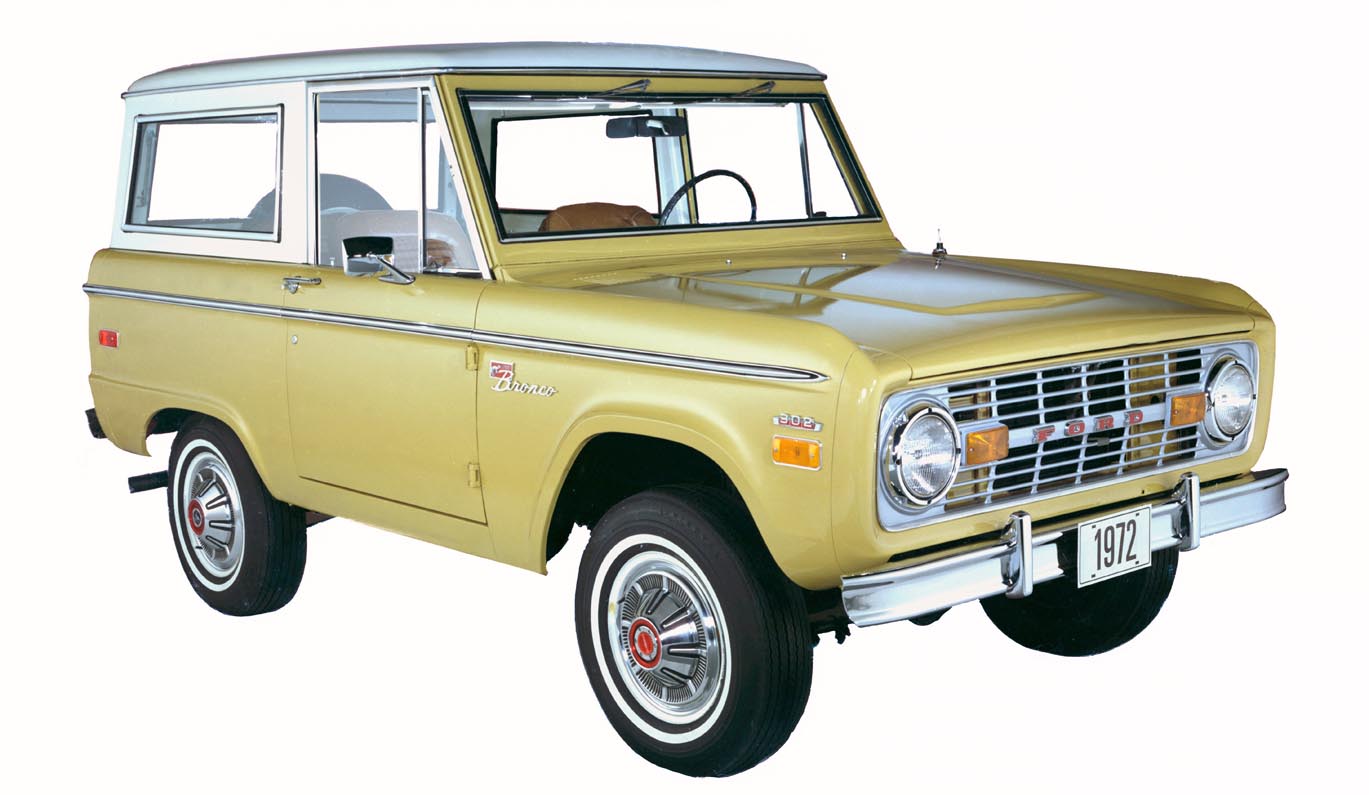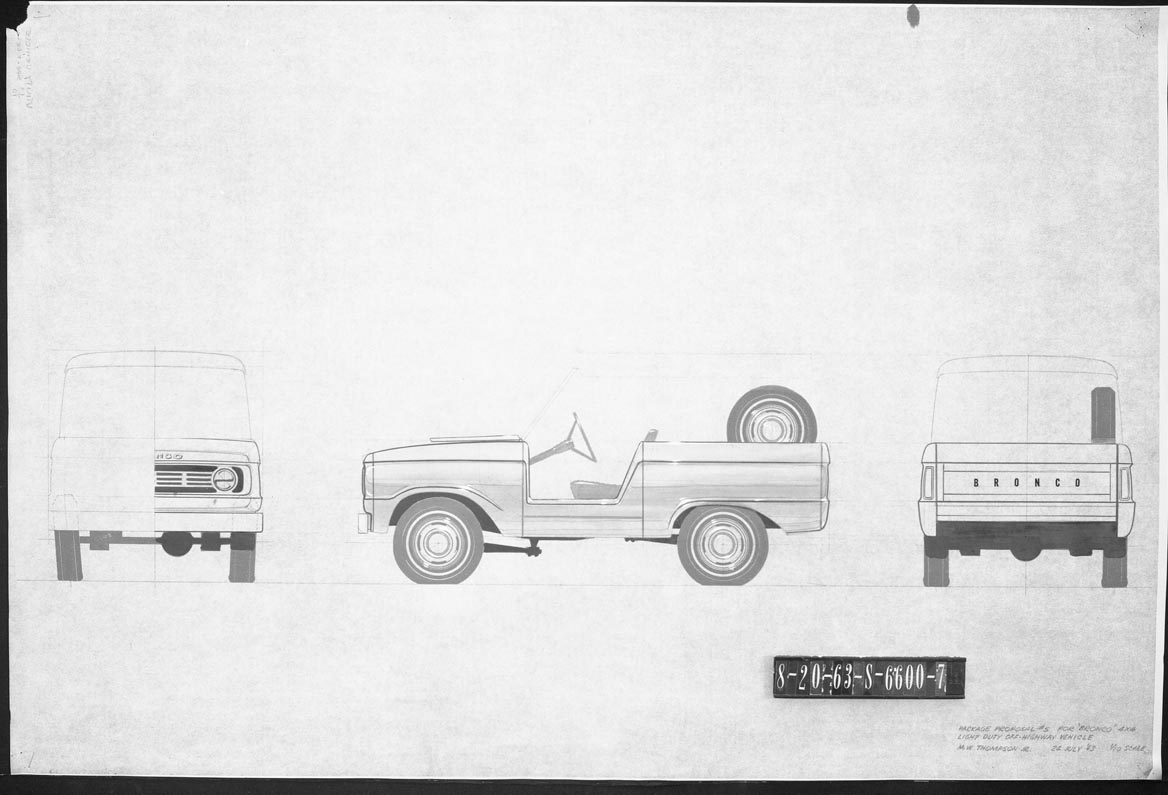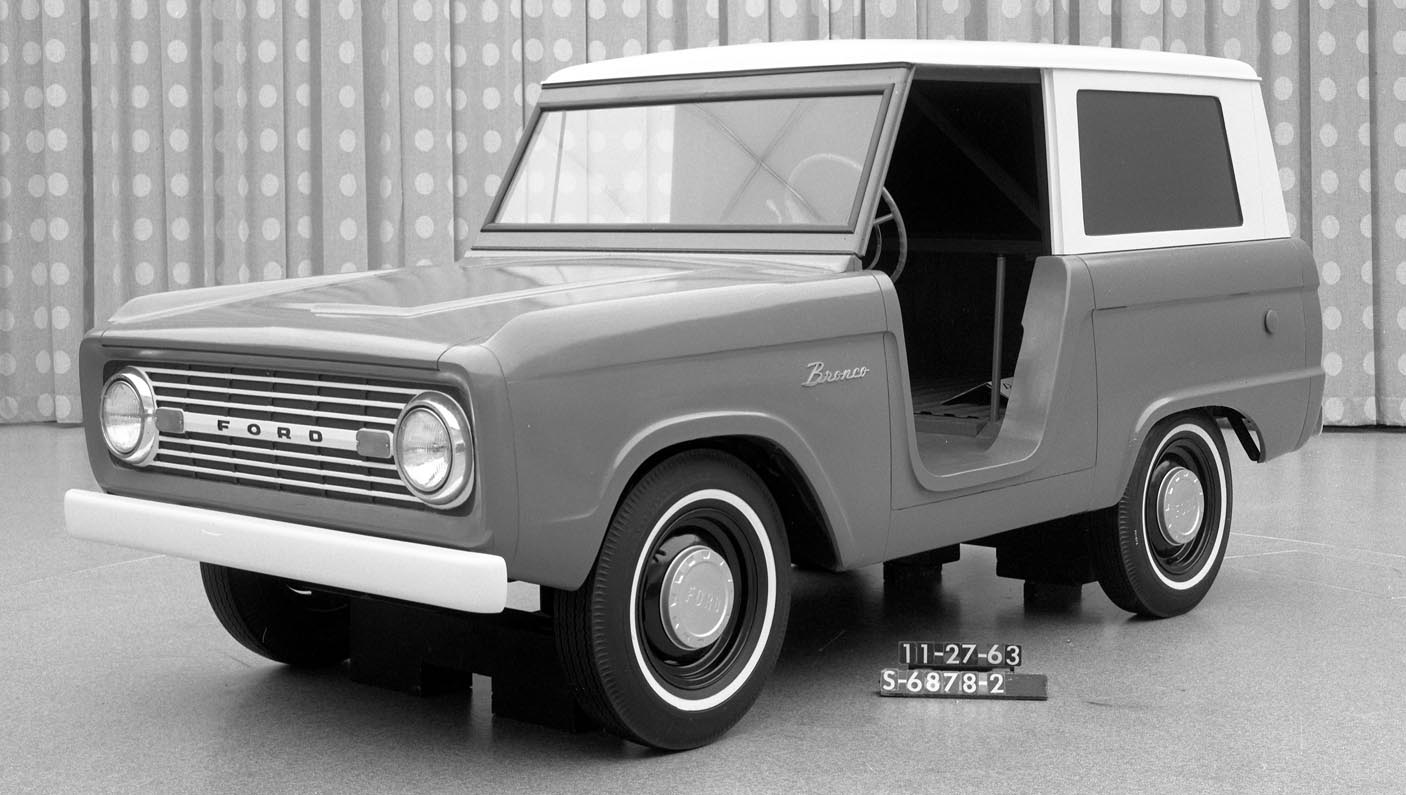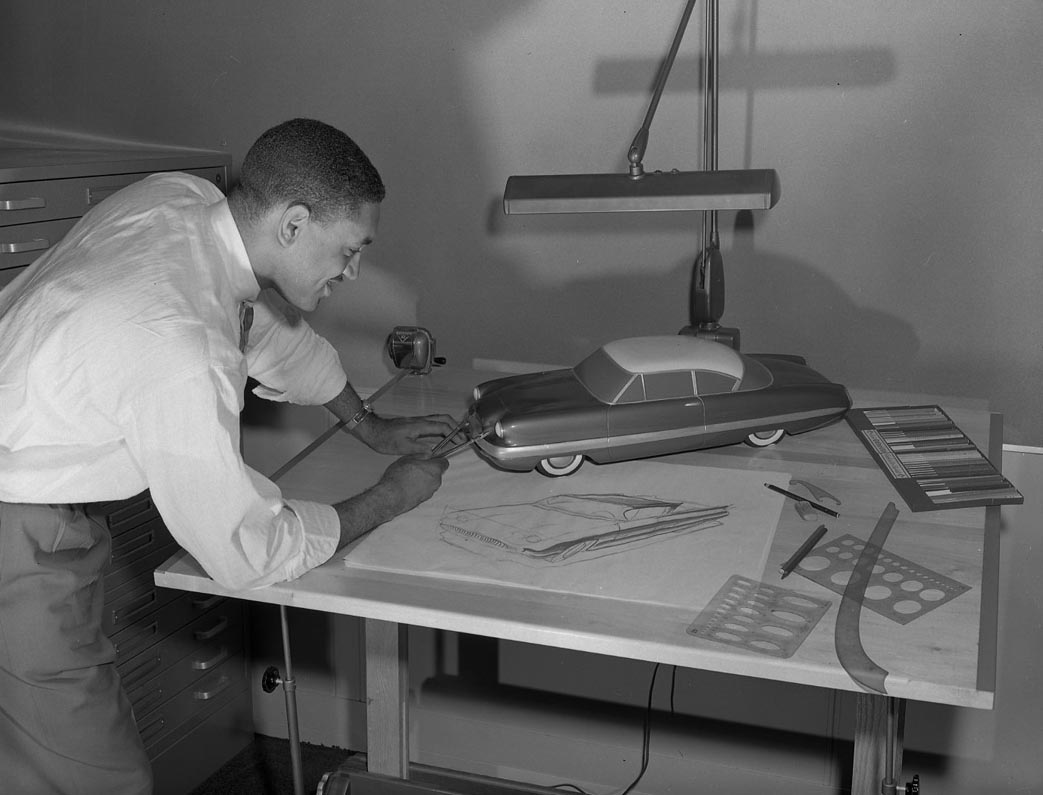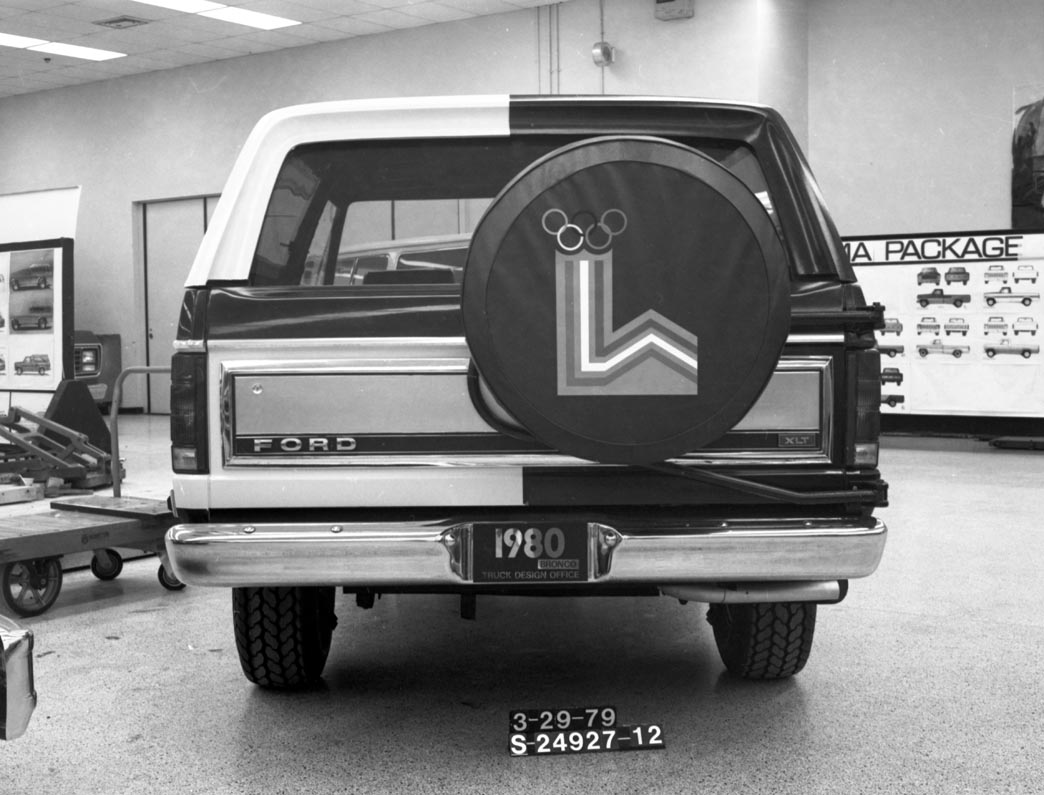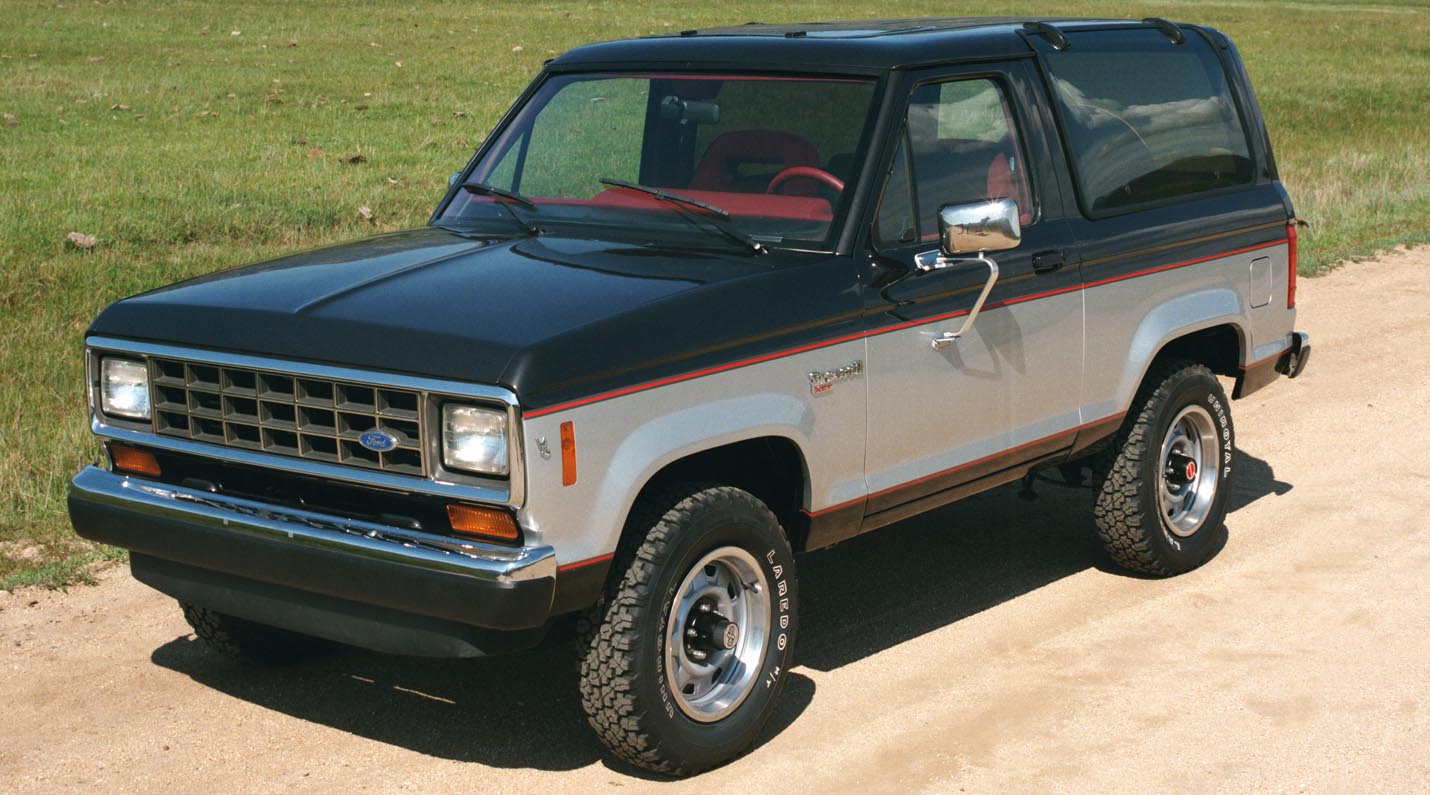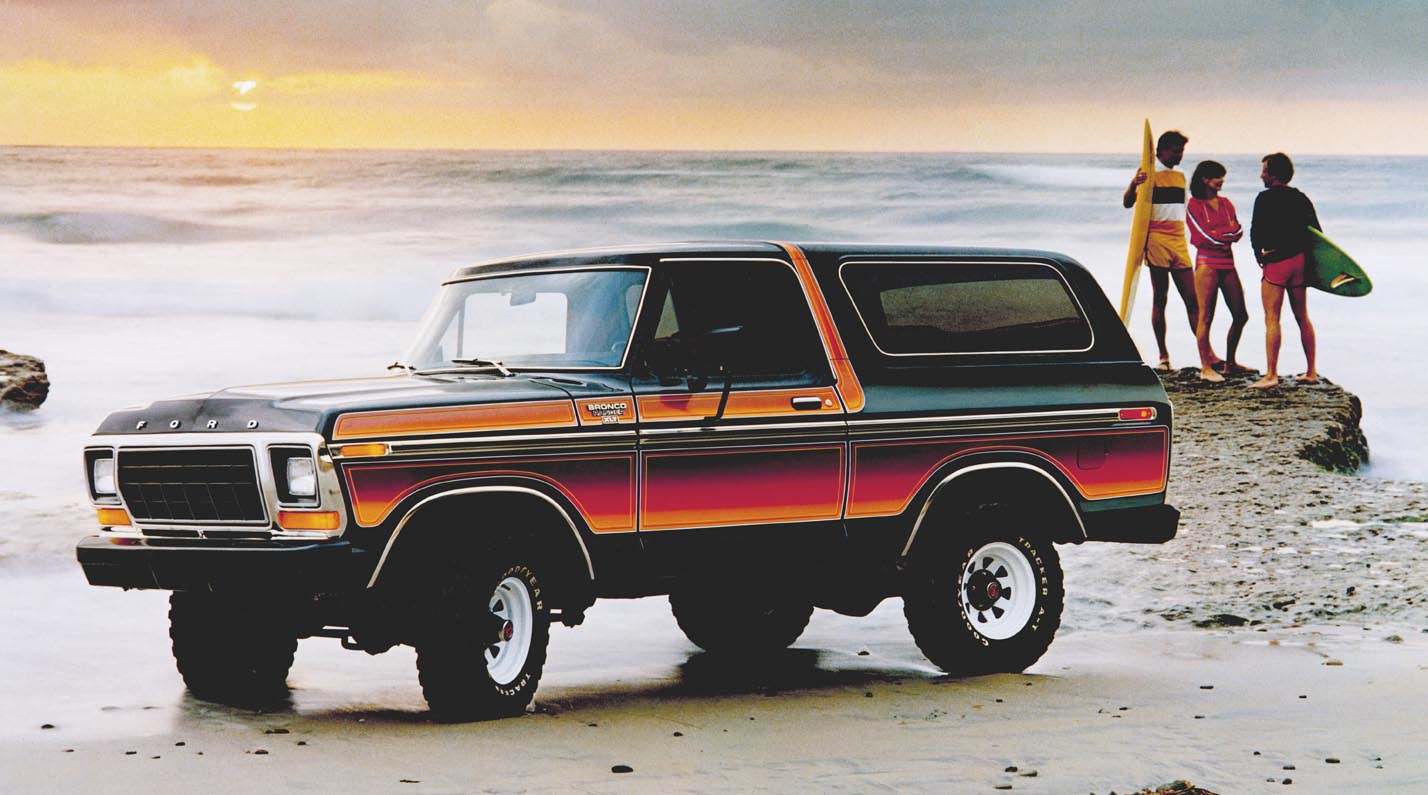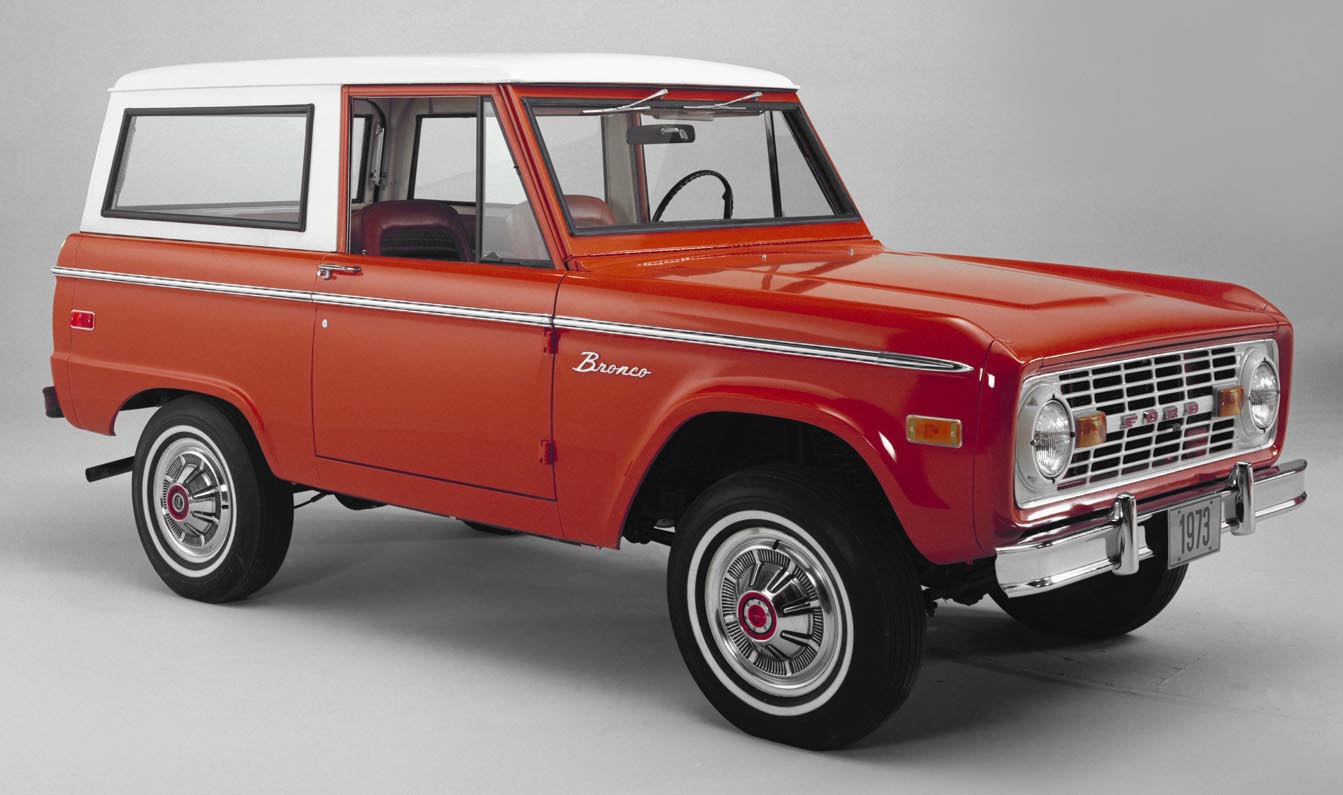
The idea behind the Bronco began with Ford product manager Donald N. Frey in the early 1960s (who also conceived the Ford Mustang) and engineered by Ford engineer Paul G. Axelrad, with Lee Iacocca approving the final model for production in February 1964, after the first clay models were built in mid-1963. Developed as an off-road vehicle (ORV), the Ford Bronco was intended as a competitor for the Jeep CJ-5 and International Harvester Scout. Today a compact SUV in terms of size, Ford marketing shows a very early example of promoting a civilian off-roader as a “Sports Utility” (the two-door pickup version).
Initially selling well, following the introduction of the Chevrolet Blazer, Jeep Cherokee, and International Scout II (from 1969 to 1974), demand shifted towards SUVs with better on-road capability, leading to a decline in demand for the Ford Bronco.
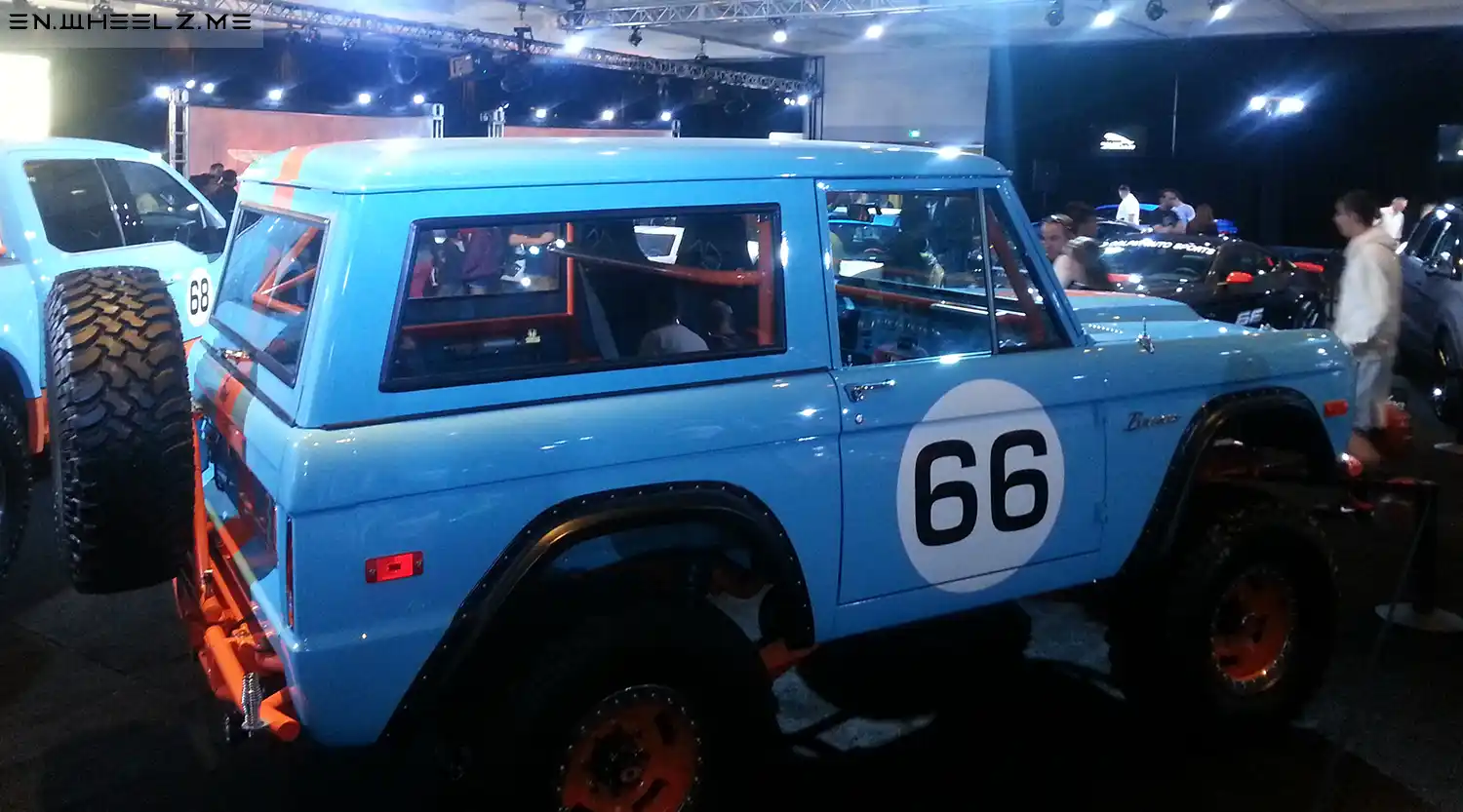
Chassis
The first-generation Ford Bronco is built upon a chassis developed specifically for the model range, shared with no other Ford or Lincoln-Mercury vehicle. Built on a 92-inch wheelbase (sized between the CJ-5 and Scout; only an inch shorter than the later CJ-7), the Ford Bronco used box-section body-on-frame construction.
To simplify production, all examples were sold with four-wheel drive; a shift-on the-fly Dana 20 transfer case and locking hubs were standard. The rear axle was a Ford 9-inch axle, with Hotchkiss drive and leaf springs; the front axle was a Dana 30, replaced by a Dana 44 in 1971. In contrast to the Twin I-Beams of larger Ford trucks, the Bronco used radius arms to locate the coil-sprung front axle, along with a lateral track bar, allowing for a 34-foot turning circle, long wheel travel, and antidive geometry (useful for snowplowing). A heavier-duty suspension system was an option, along with air front springs.
Powertrain
At its August 1965 launch, the Ford Bronco was offered with a 170-cubic-inch inline six. Derived from the Ford Falcon, the 105-hp engine was modified with solid valve lifters, a 6-US-quart (6 L) oil pan, heavy-duty fuel pump, oil-bath air cleaner, and carburetor with a float bowl compensated against tilting. In March 1966, a 200-hp 289-cubic-inch V8 was introduced as an option. For the 1969 model year, the 289 V8 was enlarged to 302 cubic inches, remaining through the 1977 model year. For 1973, a 200 cubic-inch inline six became the standard engine, offered through 1977.
To lower production costs, at its launch, the Bronco was offered solely with a three-speed, column-shifted manual transmission and floor-mounted transfer case shifter (with a floor-mounted transmission shifter later becoming a popular modification). In 1973, in response to buyer demand, a three-speed automatic transmission was offered as an option.
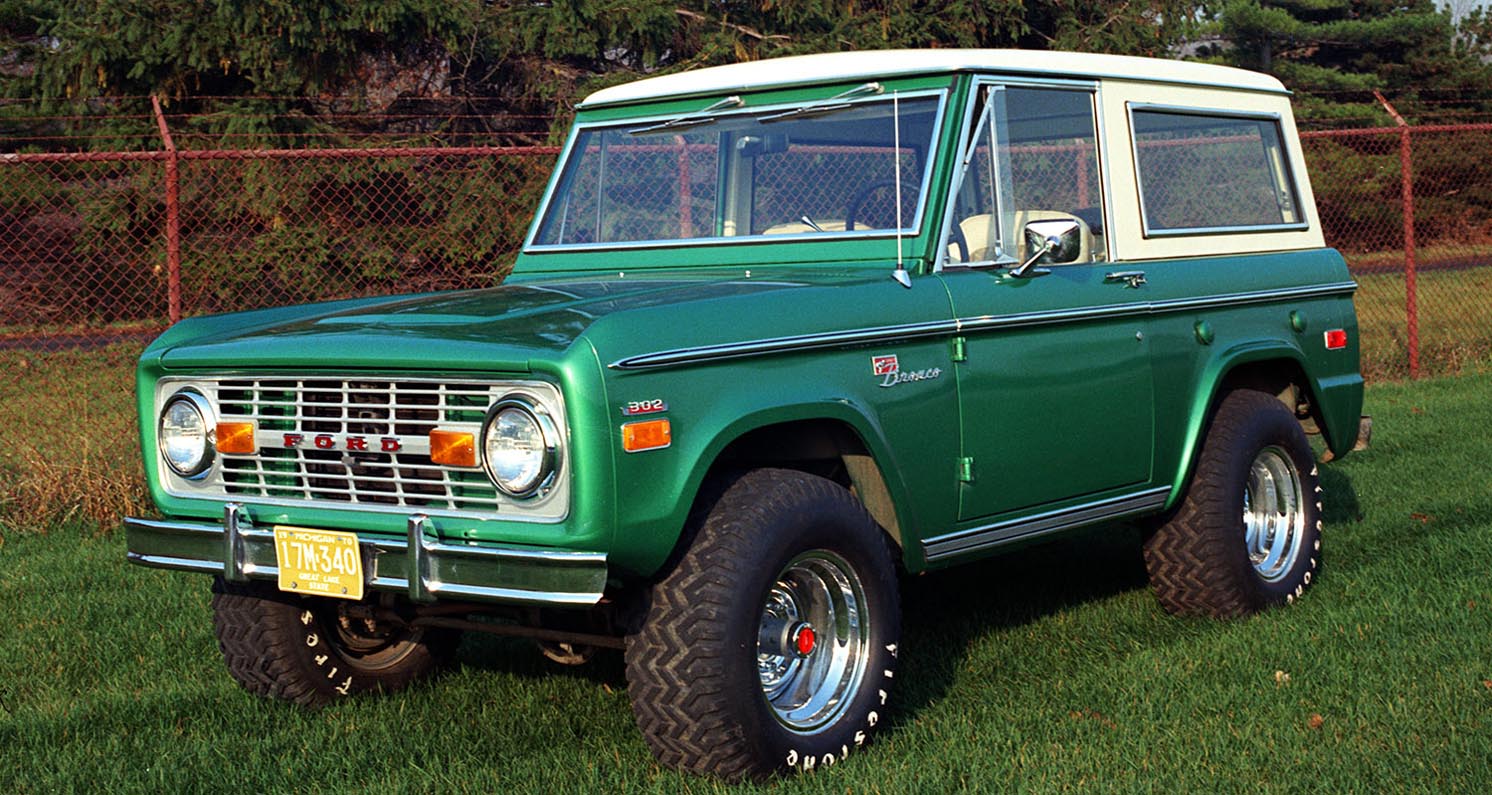 Body design
Body design
In a central theme of the first-generation Ford Bronco, styling was subordinated to simplicity and economy, so all glass was flat, bumpers were straight C-sections, and the left and right door skins were symmetrical (prior to the fitment of door-mounting hardware).
For 1966, three body configurations were offered, including a two-door wagon and half-cab pickup, and open-body roadster. At its $2,194 base price ($17,507 in 2018 dollars), the Bronco included few amenities as standard. However, a large number of options were offered through both Ford and its dealers, including front bucket seats, a rear bench seat, a tachometer, and a CB radio, as well as functional items such as a tow bar, an auxiliary gas tank, a power take-off, a snowplow, a winch, and a posthole digger. Aftermarket accessories included campers, overdrive units, and the usual array of wheels, tires, chassis, and engine parts for increased performance.
For 1967, Ford introduced the Sport option package for the Bronco wagon. Consisting primarily of chrome exterior trim and wheelcovers, the Sport package was distinguished by red-painted FORD grille lettering. For 1970, the Bronco Sport became a freestanding model rather than an option package.
To comply with federal regulations, the Bronco was fitted with backup lights and side marker lamps (in 1967 and 1968, respectively). After struggling with sales, the open-body Bronco roadster was withdrawn after the 1968 model year.
After 1972, the Bronco half-cab was withdrawn; along with its lower sales compared to the wagon, Ford had introduced the larger Ford Courier compact pickup.
In a minor revision, for 1977, the exterior-mounted fuel tank caps were replaced behind hinged doors (as on all other Ford trucks).
Trim
Inititally offered as a single trim level with a long option list, for 1967, Ford introduced the Sport option package for the Bronco wagon. Consisting primarily of chrome exterior trim and wheelcovers, the Sport package was distinguished by red-painted FORD grille lettering. For 1970, the Bronco Sport became a freestanding model rather than an option package.
For 1972, in line with the F-Series trucks, the Ranger trim became the top-of-the-line Bronco, offering body stripes, model-specific wheel covers, cloth seats, woodgrain door panels, and carpeted interior.
In a 1975 interior revision, the Bronco Sport and Bronco Ranger adapted the two-spoke steering wheel from the F-Series.
